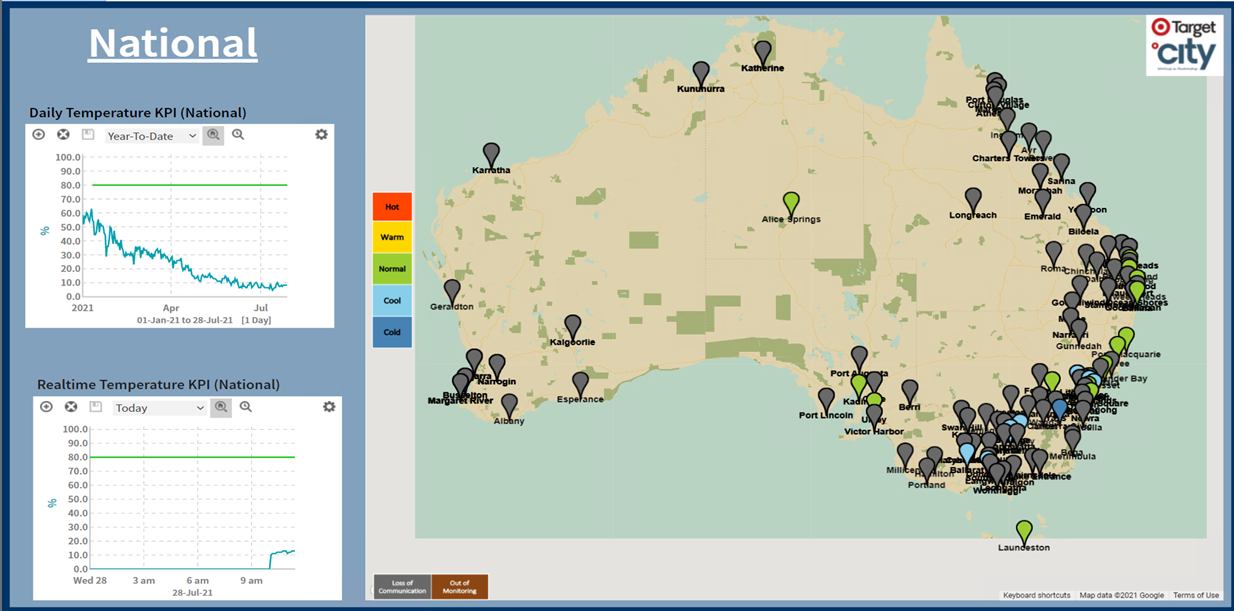Kmart Group Energy Centre pilots remote store access

With hundreds of stores across Australia and New Zealand using electricity for lighting, air conditioning and heating, Kmart Group spends a significant amount of money on utility bills and generates carbon emissions from these operations. Not satisfied with improving energy efficiency by 26.5 per cent, emissions intensity by 36 per cent per square metre of floor space and saving millions of dollars in avoided costs since 2015, Kmart Group has been exploring new ways to cost effectively take emissions reduction and cost savings to the next level.
Much of the energy saving ‘low hanging fruit’ has already been taken, such as lighting upgrades, audits and overnight load management. This has required Kmart Group to explore the information rich energy use data, insights and controls of store Building Management Systems (BMS) to find longer-term reductions in energy use. While this is easy to do one site at a time, Kmart Group has needed to develop and test systems and processes to scale our ability to gather data and achieve system interoperability across many store BMS at the same time in a cost-effective way.
Through a pilot program conducted this year involving 10 stores, we have been able to develop systems and processes that allow the Kmart Group Energy Centre (analytics and engineering team) to remotely access store BMS to monitor the operation of lighting, heating and cooling systems in real time and identify and, importantly, remedy anomalies and energy inefficient or costly behaviours.
This has reduced our energy use and emissions at participating stores while saving $166,000 in avoided operating costs at participating stores and the need for costly technicians having to attend stores to change a dial or setting.
These savings have come from BMS insights that have led the team to finding issues that include air handling units and cold water chiller pumps running constantly, decreasing the energy efficiency of these stores but also increasing wear on equipment. More broadly, Kmart Group has also been able to reduce the operation of non-essential plant and equipment out of opening hours. During Good Friday while stores were closed, we could ensure that only mission critical IT infrastructure and other equipment was operating. Additionally, peaks in energy usage that commonly occur throughout the day have been able to be smoothed to reduce strain on the electricity grid and reduce exposure to charges associated with high energy demand.
Learnings from this pilot are now being implemented across targeted stores with the intention of being applied to all sites where it is technically possible and economically viable.